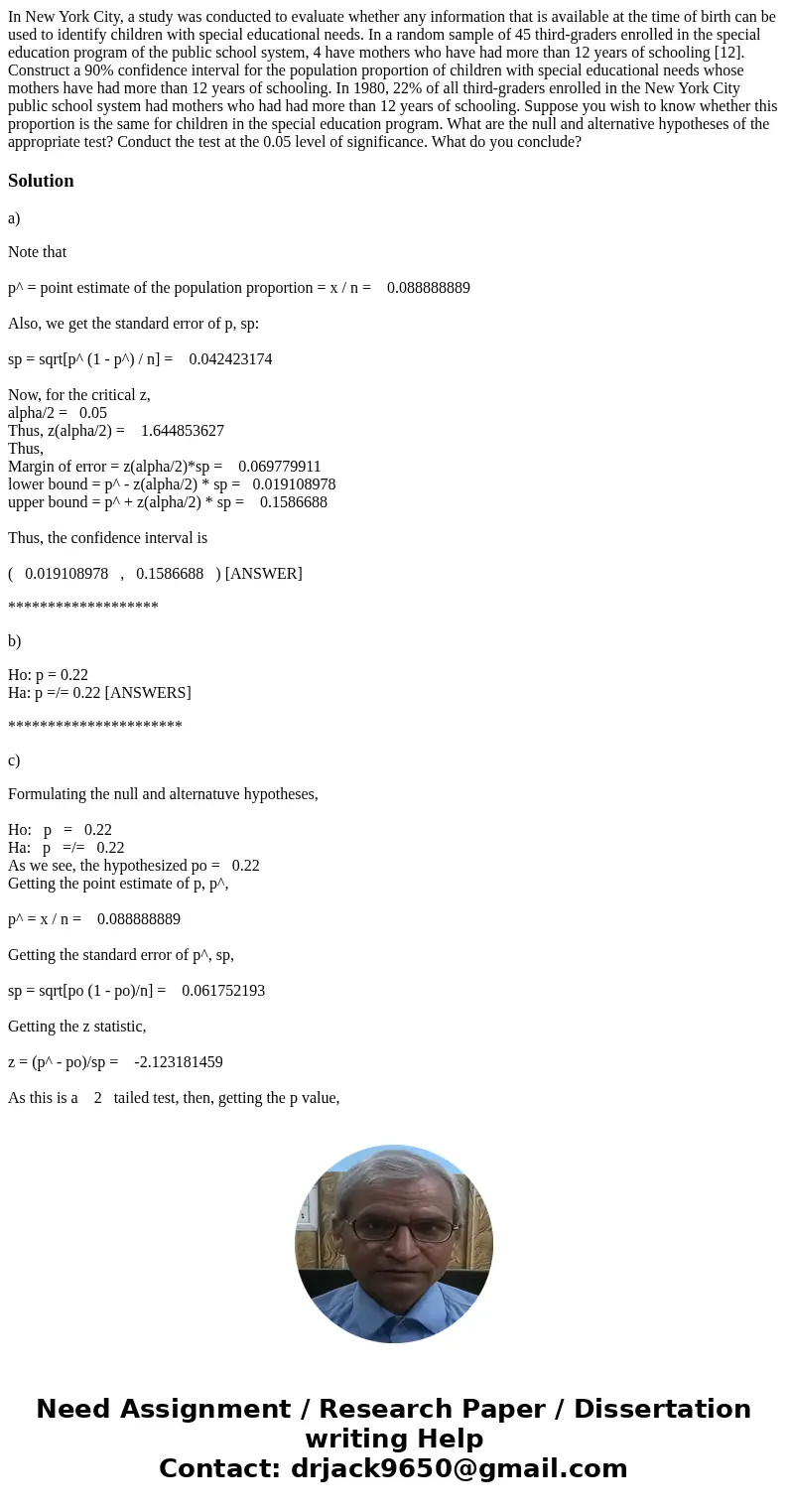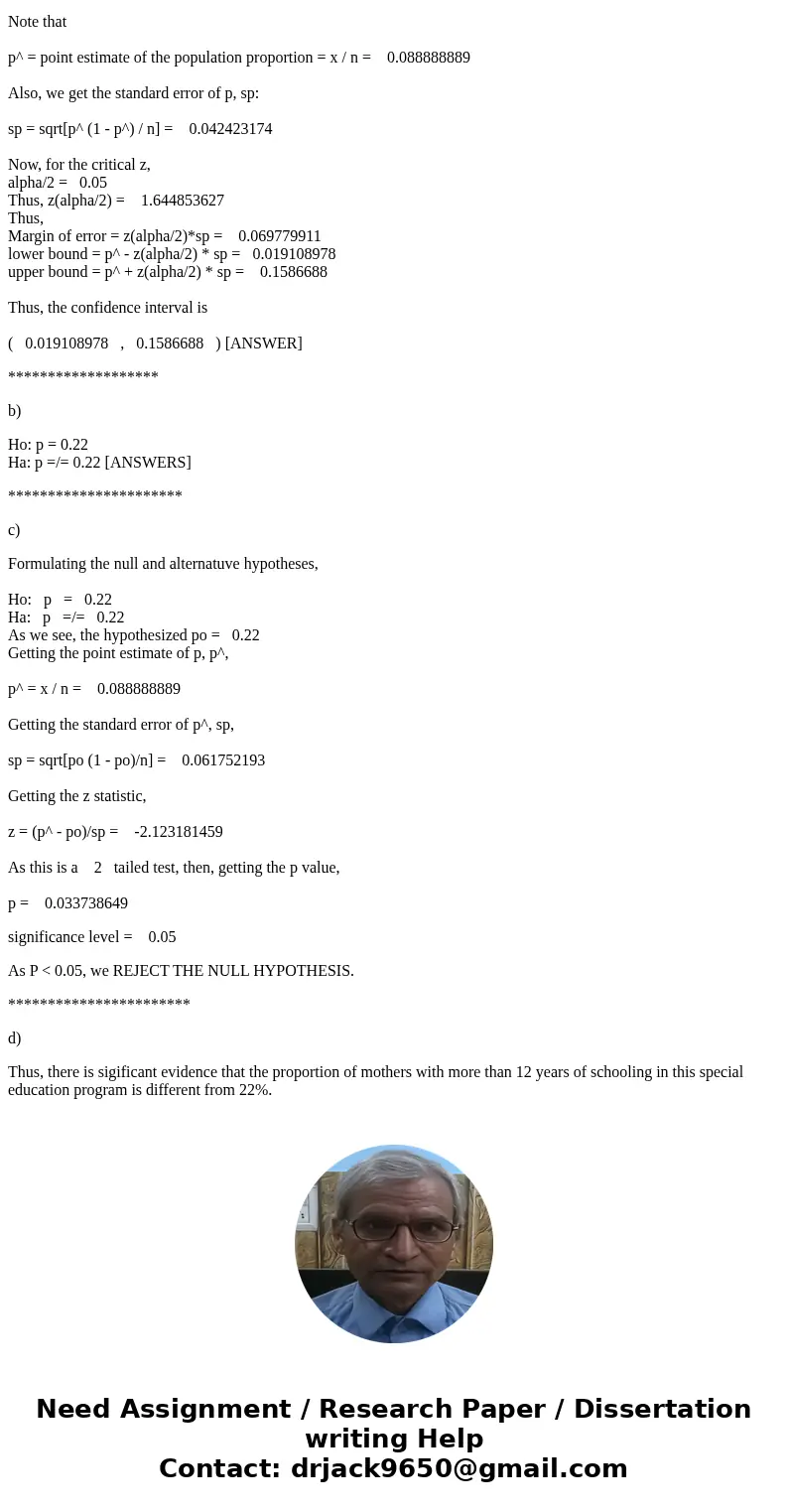In New York City a study was conducted to evaluate whether a
Solution
a)
Note that
p^ = point estimate of the population proportion = x / n = 0.088888889
Also, we get the standard error of p, sp:
sp = sqrt[p^ (1 - p^) / n] = 0.042423174
Now, for the critical z,
alpha/2 = 0.05
Thus, z(alpha/2) = 1.644853627
Thus,
Margin of error = z(alpha/2)*sp = 0.069779911
lower bound = p^ - z(alpha/2) * sp = 0.019108978
upper bound = p^ + z(alpha/2) * sp = 0.1586688
Thus, the confidence interval is
( 0.019108978 , 0.1586688 ) [ANSWER]
*******************
b)
Ho: p = 0.22
Ha: p =/= 0.22 [ANSWERS]
**********************
c)
Formulating the null and alternatuve hypotheses,
Ho: p = 0.22
Ha: p =/= 0.22
As we see, the hypothesized po = 0.22
Getting the point estimate of p, p^,
p^ = x / n = 0.088888889
Getting the standard error of p^, sp,
sp = sqrt[po (1 - po)/n] = 0.061752193
Getting the z statistic,
z = (p^ - po)/sp = -2.123181459
As this is a 2 tailed test, then, getting the p value,
p = 0.033738649
significance level = 0.05
As P < 0.05, we REJECT THE NULL HYPOTHESIS.
***********************
d)
Thus, there is sigificant evidence that the proportion of mothers with more than 12 years of schooling in this special education program is different from 22%.


 Homework Sourse
Homework Sourse